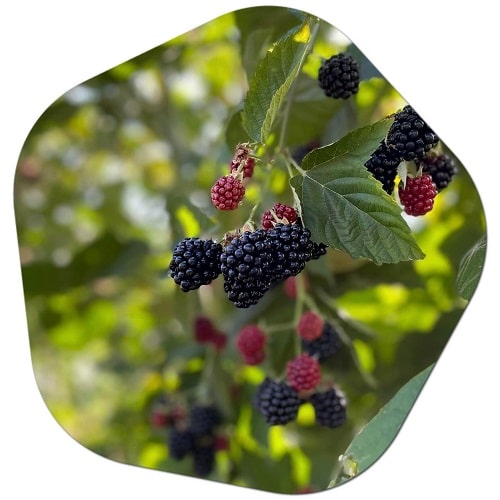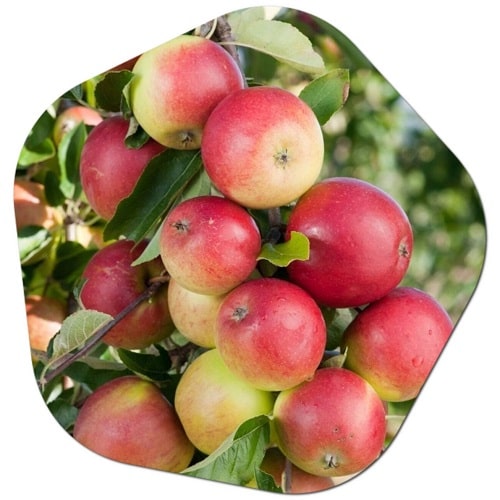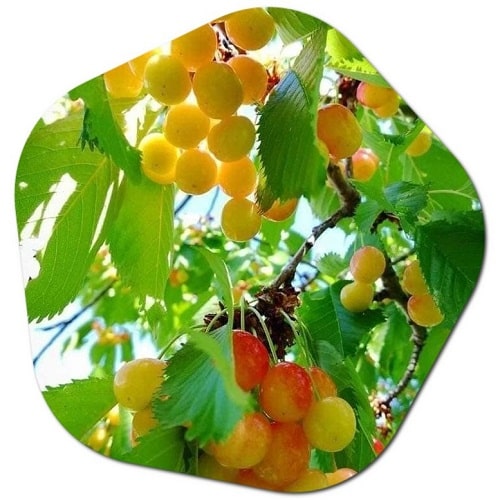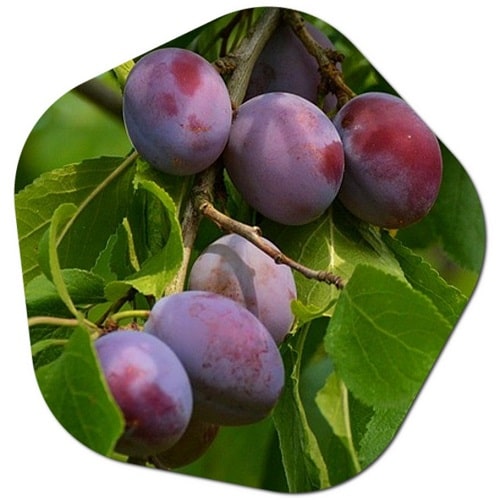What is the national fruit of Scotland?
Scotland does not have an officially designated national fruit. However, the raspberry is sometimes associated with Scotland due to the country’s history of raspberry cultivation and production. Scotland has been known for its high-quality raspberries, and they have played a role in its agricultural industry. Keep in mind that this information might have changed since then, so I recommend checking with more recent sources to verify if there have been any updates regarding the national fruit of Scotland.
Scotland does not have an official national fruit. The thistle is often considered a symbol of Scotland, but it is not a fruit. The thistle is a spiky plant that holds historical and cultural significance for the country. However, unlike some other nations, Scotland does not have a widely recognized national fruit.
What are the easiest fruits to grow in Scotland?
Scotland’s climate can be challenging for growing certain types of fruits due to its cooler temperatures and shorter growing season. However, there are several fruits that are relatively easier to grow in Scotland’s conditions. Some of these include:

- Raspberries: Raspberries are well-suited for the Scottish climate. They are hardy and can thrive in a variety of soil types. They can be grown both in the ground and in containers.
- Blackcurrants: Blackcurrants are known for their resilience in colder climates. They are relatively low-maintenance and can produce a good harvest.
- Gooseberries: Gooseberries are another hardy fruit that can do well in Scotland. They come in various varieties and can tolerate the climate.
- Strawberries: While strawberries might need some extra care to protect them from cold snaps and frost, they can be grown successfully in Scotland. Consider growing them in containers or under cloches to extend the growing season.
- Apples: There are apple varieties that are specifically bred for colder climates, known as “heritage” or “Scottish” apples. These varieties are more likely to thrive in the Scottish climate.
- Plums: Certain plum varieties, such as Victoria plums, can do well in Scotland. They might need some protection during colder periods.
- Currants: Red currants and white currants are hardy and can be grown in Scottish gardens.
- Blueberries: While blueberries require slightly more acidic soil, they can be grown successfully with some soil amendments. They might be better suited for areas with milder climates within Scotland.
- Elderberries: Elderberries are native to Scotland and can be grown without much trouble.

When cultivating these fruits, it’s important to choose suitable varieties for the Scottish climate, prepare the soil adequately, and provide protection from harsh weather conditions when needed. Consider using methods like cloches, row covers, and mulching to help extend the growing season and protect plants from cold snaps. Additionally, taking into account microclimates in your garden or choosing sheltered spots can also contribute to successful fruit cultivation in Scotland.
What trees can grow in Scotland?
Scotland’s climate is characterized by its relatively cool temperatures, varying levels of rainfall, and sometimes harsh conditions. As a result, certain tree species are better suited to thrive in this environment. Here are some tree species that can grow well in Scotland:
- Scots Pine (Pinus sylvestris): The Scots Pine is Scotland’s national tree and is well adapted to the country’s climate. It can tolerate poor soil conditions and is often found in various habitats, including moorlands and hillsides.
- Silver Birch (Betula pendula): Silver birch is a hardy and fast-growing tree that can do well in Scotland. It’s known for its distinctive white bark and light, airy foliage.
- Rowan (Sorbus aucuparia): Also known as the mountain ash, the rowan is well-suited for Scotland’s climate. It produces clusters of bright red berries and can tolerate a range of soil types.
- Common Alder (Alnus glutinosa): Alder trees are often found near water sources due to their tolerance for wet soils. They provide habitat for various wildlife species.
- Willow (Salix spp.): Willow species, including the native downy willow, can thrive in damp or wet areas. They are often planted along watercourses and in wetlands for erosion control.
- Hawthorn (Crataegus monogyna): Hawthorn is a tough and adaptable tree that produces clusters of white or pink blossoms in spring and red berries in autumn. It can be found in hedgerows and woodlands.
- Oak (Quercus robur and Quercus petraea): Both the native pedunculate oak (Quercus robur) and the sessile oak (Quercus petraea) can grow in Scotland. Oak trees are iconic and provide important habitats for various wildlife species.
- Aspen (Populus tremula): Aspen trees are well-suited to the Scottish climate and are known for their trembling leaves. They often grow in mixed woodlands.
- Beech (Fagus sylvatica): Beech trees can grow in Scotland, especially in more sheltered areas. They have distinctive smooth gray bark and produce edible beechnuts.
- Mountain Ash (Sorbus aucuparia): Mountain ash, also known as rowan, is native to Scotland and produces clusters of red berries in autumn. It can grow in a variety of soil types.
It’s important to consider factors such as soil type, drainage, wind exposure, and altitude when selecting tree species for planting in Scotland. Native trees are generally well-adapted to the local conditions and can support local ecosystems and wildlife. If you’re considering planting trees, it’s a good idea to consult with local forestry or gardening experts for specific recommendations based on your location and conditions.
Do cherry trees grow in Scotland?
Yes, cherry trees can grow in Scotland, but they might require some specific care and attention due to the country’s climate. Cherry trees are known for their beautiful blossoms in spring and their delicious fruit. However, Scotland’s cooler temperatures and shorter growing season can present some challenges for cherry cultivation. Here are a few considerations if you’re looking to grow cherry trees in Scotland:

- Variety Selection: Choose cherry tree varieties that are better suited for colder climates and have shorter growing seasons. Some sour cherry varieties (Prunus cerasus) and hardy sweet cherry varieties (Prunus avium) can perform well in Scotland.
- Site Selection: Plant cherry trees in a location that receives good sunlight, preferably a south-facing spot that can capture as much warmth as possible. This will help the trees to develop flowers and fruit.
- Soil Preparation: Prepare the soil by adding organic matter and ensuring proper drainage. Cherry trees prefer well-drained soil that is rich in nutrients.
- Protection from Frost: Cherries can be sensitive to late spring frosts that can damage blossoms and young fruit. Consider planting cherry trees in a location where they are less exposed to frost pockets and cold winds.
- Frost Prevention: In areas prone to late frosts, you can consider using protective measures like frost cloths or covers to shield the blossoms from frost damage during critical periods.
- Pruning and Training: Proper pruning and training of cherry trees are important for their health and fruit production. Pruning can help improve air circulation, prevent disease, and encourage proper fruit development.
- Pollination: Some cherry varieties are self-pollinating, while others benefit from cross-pollination. If you’re planting more than one cherry tree, consider selecting varieties that can cross-pollinate each other to improve fruit set.
- Mulching: Apply a layer of organic mulch around the base of the tree to help retain soil moisture, suppress weeds, and regulate soil temperature.
- Careful Watering: Cherry trees require consistent watering, especially during dry spells and in the first few years after planting. However, avoid waterlogged soil, as cherries prefer well-drained conditions.
- Disease and Pest Management: Keep an eye out for common cherry tree pests and diseases, such as aphids, cherry fruit fly, and brown rot. Regular monitoring and early intervention can help manage these issues.
Remember that while cherry trees can be grown in Scotland, there might be some variation in success based on the specific location within the country and the microclimates present. It’s a good idea to consult with local gardening experts or nurseries for advice on cherry tree varieties that are well-suited for your particular area in Scotland. Scotland’s most popular fruit trees >>
What fruits are produced in Scotland?
Scotland produces a variety of fruits, despite its challenging climate. While the growing season and conditions might limit the types of fruits that can be cultivated compared to warmer regions, Scottish farmers and gardeners have been successful in producing a range of fruits. Some of the fruits that are produced in Scotland include:

- Raspberries: Scotland is known for its high-quality raspberries, which thrive in the country’s climate. They are used in jams, desserts, and other culinary applications.
- Blackberries: Blackberries are commonly found growing wild in Scotland, and they are also cultivated for various uses.
- Strawberries: While strawberries require careful attention to protect them from the elements, they are still grown in Scotland and enjoyed during the summer months.
- Apples: Certain apple varieties, especially those suited for colder climates, can be successfully grown in Scotland. Many traditional Scottish apple varieties exist.
- Plums: Plum trees can produce fruit in Scotland, particularly in milder and sheltered areas.
- Currants: Both red and white currants are cultivated in Scotland and used in preserves, baking, and desserts.
- Gooseberries: Gooseberries, known for their tartness, are also grown and used in various culinary creations.
- Blueberries: While requiring slightly more acidic soil, blueberries are being grown in Scotland, especially in areas where soil amendments are made.
- Cherries: Despite the challenges of the climate, some cherry varieties can be cultivated in Scotland, particularly in more sheltered locations.
- Elderberries: Elderberries are native to Scotland and are used in jams, wines, and medicinal preparations.
- Rowan Berries: These berries, also known as mountain ash berries, are used to make jams, jellies, and even alcoholic beverages.
- Bilberries: Similar to blueberries, bilberries are a wild fruit that can be found in certain parts of Scotland.
It’s important to note that the success of fruit cultivation in Scotland can vary depending on the specific location, elevation, and microclimate. Some fruits might be more suited to specific areas or require additional protection, such as growing them in greenhouses or under cloches. While the growing season might be shorter and more challenging compared to warmer regions, Scottish farmers and gardeners have developed techniques to make the most of the available conditions and produce a diverse range of fruits. What types of fruit grow in Scotland? >>





